Financing Options that Can Help Your Company Grow

Financing is one of the most challenging aspects of doing business. It can be tough to find the money you need to grow your company and keep it afloat in times of economic crisis. But there are a ton of options for financing out there for businesses. From personal loans to crowdfunding campaigns, here will discuss Financing Options that Can Help Your Company Grow!
15 Financing Options that Can Help Your Company Grow
Friends and Family Loans
If you have friends or family willing to loan you money, that could be your best option. They understand your business better than a bank and can make a more informed decision about whether or not you're likely to pay them back. You can use this money for anything from paying for materials to funding your expansion. You can look into getting a short-term loan from friends or family and then repaying them over time with some interest. You can use these loans to fund your company's day-to-day operations before considering a significant investment from a bank or private equity firm.
Personal Loan
Another option for Financing is to get a personal loan directly from a bank or credit union. It's doubtful that you'll be able to find another lender, and if you land this type of loan, there will be little competition for the money. Banks are looking for a long-term repayment, and you won't have to deal with late fees or unexpected fees. If you've been denied a loan from a bank, you could try a personal loan instead.
Business Loan
If you've secured funding from friends and family or your savings, you might want to consider a business loan. This option is often the least appealing since it's permanent. You'll have to repay the loan for years or even decades. The bank will look at your credit report and decide whether or not you're likely to repay the loan. Some small business owners find it more advantageous to get funding from friends and family rather than a bank.
Private Equity Funding
If you're looking for an option similar to a standard business loan, private equity might be good. A private equity firm will offer you funding in exchange for partial ownership of your company. You'll be able to put your money to work and invest in your company, but the downside is that you won't own as much of your company anymore. A private equity firm will have more influence over the company's decisions, but it'll also help it grow.
Government Grants
A government grant is similar to a loan because you'll have to pay back the money over time, but it won't require an interest payment, unlike a bank loan. Instead of charging interest, the government will take a set amount of money each year and give it back to you in a grant. There are a few different gifts out there, and they're all based on your economic circumstances.
Tax Credits
A tax credit is different from a grant in that if you're eligible for them, they'll reduce the amount that you owe in taxes. There are hundreds of tax credits available, and they can be used for anything from making home improvements to growing your business. They're just as helpful to small businesses as they are to individuals.
Investing in Your Company
If you have the cash to invest, you can choose to contribute money to your company rather than getting a loan or crowdfunding. If you feel that your company has the potential for massive growth, you might consider investing in it. If it does grow, there will be tons of opportunities for making a profit when you sell it or even when it goes public.
Crowdfunding
The last option on our list is crowdfunding. This option is similar to the other options on this list, but it's for businesses. Instead of getting a loan or investing in your company, you'll be able to raise money from backers by offering rewards for your supporters. You'll have to create a product or service first and then provide it as a reward during your campaign. Some sites even offer tips like paying for legal services or creating content for your backers.
Borrowing Against Your Business
You could even borrow money against your business. A business loan is a way to use funds from your company to expand or finance other businesses. You won't have to provide collateral, but you'll be responsible for repaying the loan over time. It's less risky than taking out a personal loan, so it might make sense if it's better for your business.
Financing Business expansion
Expansion is a big part of growing your business. There are many different ways that you can expand your company, and financing it can be one of them. If you're looking to raise money for an expansion, some options out there might work for you. Remember that the more money you have to repay, the more interest will be charged on loan.
New investment
If you've already secured funding from a bank or private equity firm, you might need to refinance your credit. Lenders want to know that you'll be able to pay them back over time, so they're willing to charge more interest if they have a lower chance of losing money on their loan. It is why it's good to seek Financing after securing a loan from a bank. Financing new investments are similar, but you might be looking for more significant amounts of money that can go towards multiple investments.
Financing mergers and acquisitions
There are times when there's too much competition in your industry, and growth is stifled. It can make it challenging to expand your company, but you might be able to buy out a competitor instead. Mergers and acquisitions can be costly, so you might want to seek Financing for them. Financing mergers and acquisitions are almost impossible unless you've already been approved for a loan or private equity.
Venture Capital
It is for larger companies that cannot pay for much-needed investments by themselves. It is perfect for helping startup businesses because it includes more funding sources than others. Also, venture capitalists don't require you to pay them back; instead, they make their profit from the company's growth and performance.
Financing Working Capital
If you're looking for Financing for working capital, you'll have your choice of several options, including cash advances, lines of credit, and factoring. To be eligible for a line of credit or a cash advance, you might have to give the lender some collateral. It is why it's always a good idea to try and secure Financing at the beginning of your business. Financing working capital is similar to funding growth in that it involves raising more money from investors. However, instead of going after significant investments and mergers and acquisitions, you'll be looking for small loans that you can repay quickly over time.
Financing with factoring
If you're interested in factoring, you already have a steady stream of cash coming in that can be used for other purposes. Factoring allows you to sell your accounts receivables to a third-party company. This company pays for your invoices before receiving them and then gives you a percentage of what they're owed. You'll get paid immediately while they get paid slowly, so factoring is a reasonably easy way to raise money.
How vital is Financing for your company?
Businesses often need funding to grow and remain competitive, but where can they? Some companies can use their profits; others rely on angel investors' private banks. Several new businesses startup with poor Financing. That is the main reason why people fail when it comes to starting a business. It is not about how much you want or doesn't want to invest; it's about your actions that will determine how successful your company will be later on in its career.
It would help if you did not trust your company's future solely on another person. If you consider investing, consider picking an Advisor or Board of Directors. Board members and Advisors can help your company grow with good counsel and advice from professional people who know the industry and may help you grow your business faster. If a board member is a family member, they will always have the best interest of their family at heart.
If you are considering funding, don't just take the first investor offer you get. You may be more than happy to have outside funding, but you should spend time selecting a willing person to invest in your company. Not just take anybody's money.
Financing is an integral part of starting a business, but it's not the whole story. Focusing too much on Financing may be your demise. Be smart about funding, and who you pick as an Advisor or Board member will determine how successful your company will be in its development.
Prepare yourself to lose money in starting a business and remain optimistic over it all.
Be realistic about your business and its goals. You may want to break records earn big profits, but that is not always the case.
Consider doing a test run with your business plan before funding and even before you start your company.
Try to be as objective as possible; make sure that your company is not too dependent on a specific type of funding or an Advisor or Board of Directors member endorsement. Try to save as much money from your company profits as you can. You never know when you might need it.
When looking for more funding, start with the people who know you and your company best and then look up to private banks and venture capital firms after trying local banks. Keep your ears eyes open for new opportunities since financing needs may arise at any time.
9 Tips to Go Ahead
If you're a business owner and have found yourself in need of some capital, it's time to reach out to your network and open the doors wide for financing options. Whether you require investments or loans, the right Financing will allow your business to proliferate.
1. If you've got a solid plan in place, you need to ask for help. Whether your business is in the early stages of development or it's time to diversify, you need to reach out and get the proper support.
2. Take a shot at working with people that have experience in your industry/niche. It will ensure that they won't steer you wrong — and they'll also be able to help grow your business even faster than ever before.
3. Always keep your company's needs in mind when seeking funding. It doesn't mean you should undervalue your business to get the funds you need — it simply means that you'll be able to serve clients better after the funding process is over.
4. Be willing to ask for help from a lender/investor interested in making your business big — costs can be reduced significantly when working with someone ready to help, and it will encourage growth rapidly.
5. Be willing to work with funding for short-term projects and long-term projects. You may not be able to afford a large loan now, but it doesn't mean your business cannot pay it off over time — and take larger loans when you're able to.
6. Don't try to secure every dollar that your company could need at one time — this will leave you without any additional funds in the future and can stunt growth entirely.
7. Patience and a good plan can go a long way when dealing with funding and investors — don't become overly emotional when asking for the right amount of money, or you could be left with nothing.
8. Even if you're unable to secure significant funding at the moment, don't let that stop you from moving forward. You may be able to find smaller amounts of money and loans to allow your company to grow even when it seems impossible.
9. Before you even seek out funding, you need to ensure that your business is sound and ready for growth. One way to do this is by working with a business advisor who can help ensure that your company is prepared for the big day.
Do you feel like you are struggling with putting "strategy" and "business growth concepts" in place that make a difference? Doing it all is overwhelming! Let’s have a honest discussion about your business and see if the Power of 10 can help you. Click “HERE” to have a great conversation with our team today.
Written and Published By The Strategic Advisor Board Team
C. 2017-2021 Strategic Advisor Board / M&C All Rights Reserved
www.strategicadvisorboard.com / info@strategicadvisorboard.com










SAB Foresight
Receive updates and insights
SAB Foresight Signup Form
Thank you for subscribing.
You will receive the next newsletter as soon as it is available.
Please try again later.
Copyright © 2017-2024 Strategic Advisor Board, LLC / M&C

